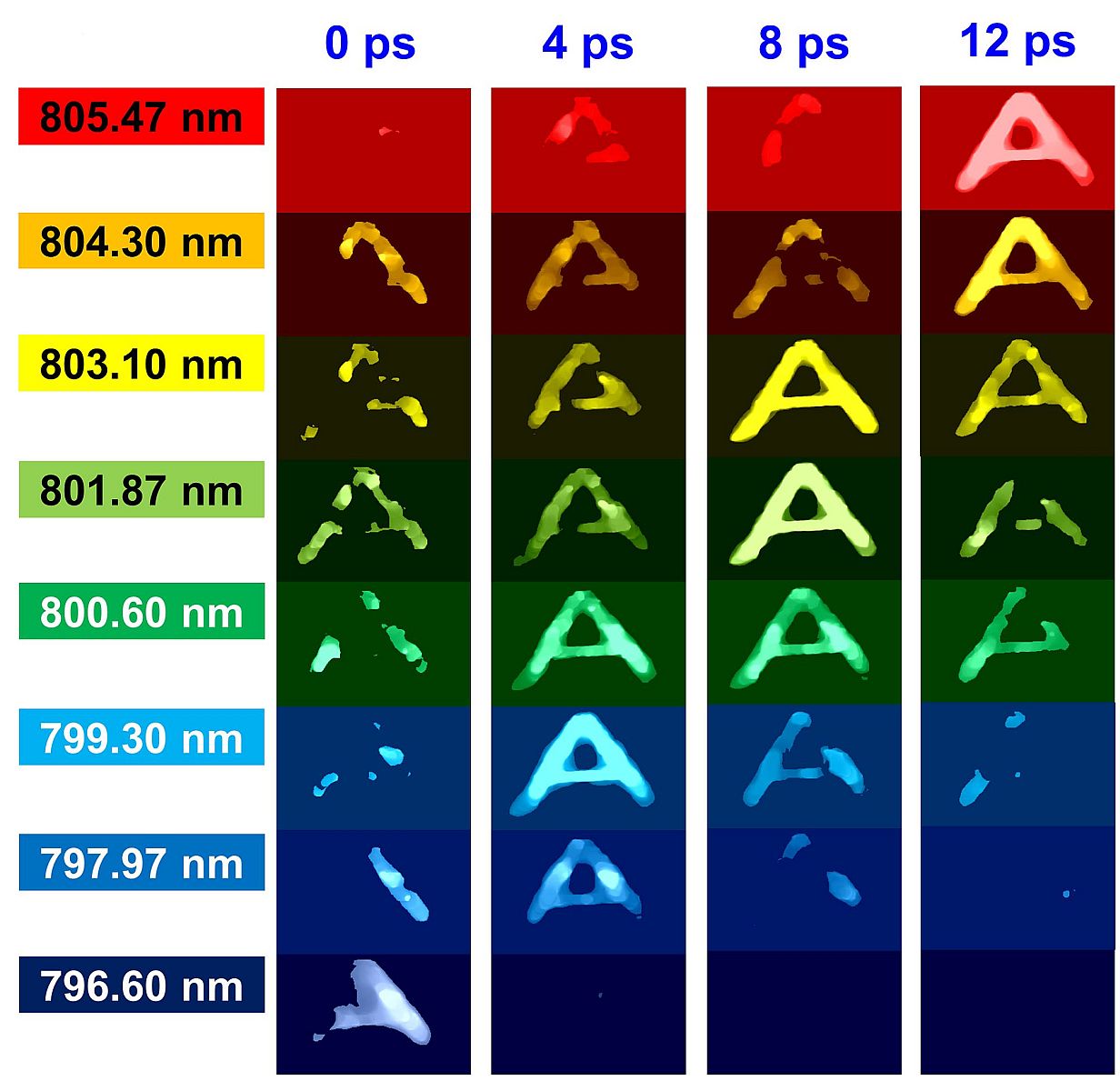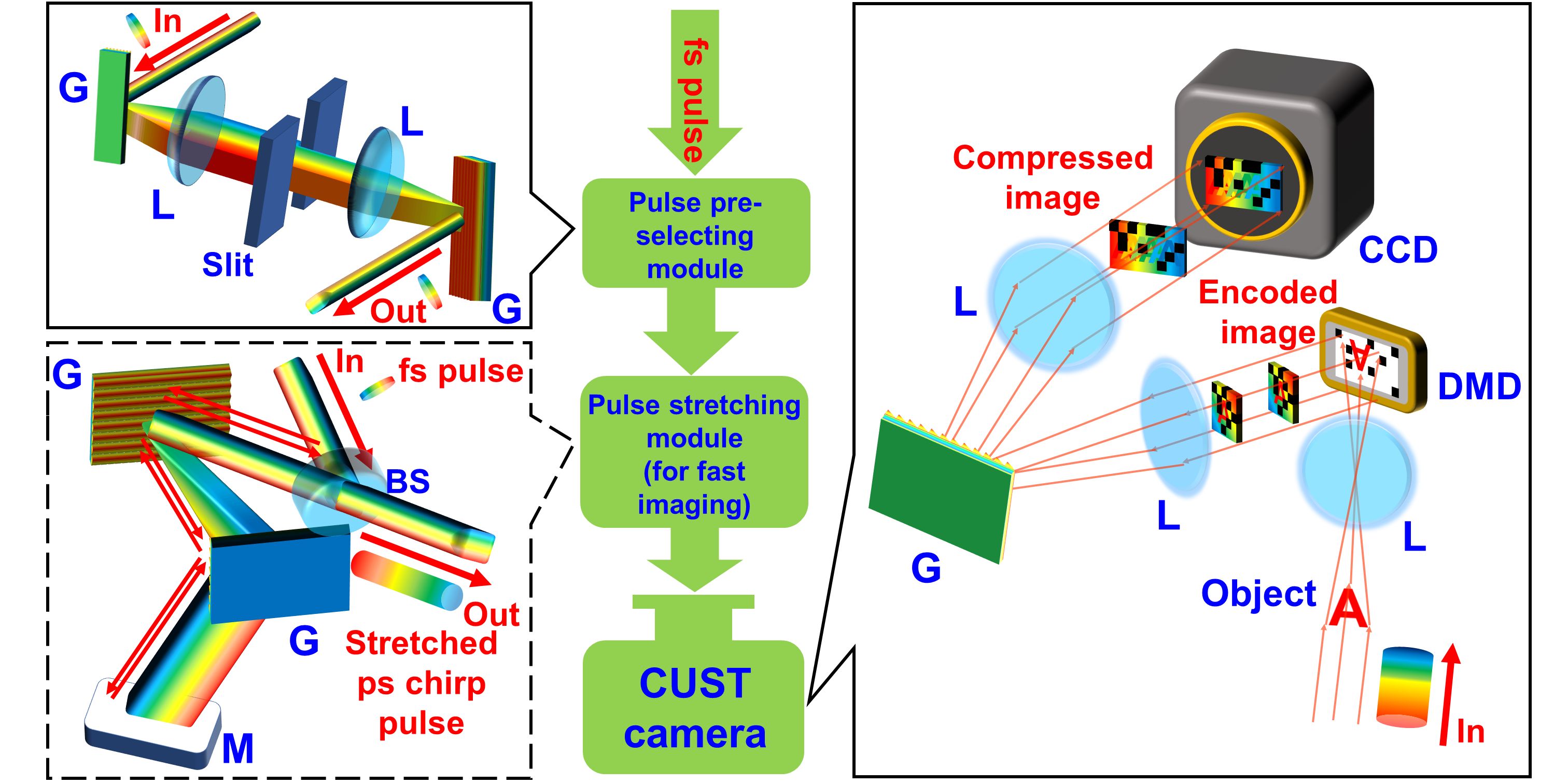A new ultra-fast imaging technology with over 3.8 trillion frames per second and large frame number

Acquiring images of ultrafast processes is a technology vitally needed for many cutting-edge physical, chemical, and biological studies. The latest research conducted by City University of Hong Kong (CityU) and Xi’an Jiaotong University has successfully developed a novel compressed ultrafast photographic technique, enabling both an ultra-high frame rate and a large frame number. Having overcome the existing limitations, the new technique offers an important tool for observing complex transient processes on the femtosecond (10-15second) timescale.
Ultrafast photography is a major driving technique that extends scientists’ understanding of a variety of transient physical or chemical processes. Built on the pump-probe technique initialized in 1980s, winner of Nobel Prize in Chemistry and Egyptian-born scientist Ahmed H. Zewail pioneered femtochemistry, which has enabled the studies of ultrafast processes to a femtosecond (10-15 s) timescale. Yet, the pump-probe method captures just one segment of an ultrafast process at a time, and can only be applied to measure stable and repeatable ultrafast processes. Further advancements have been made in recent years. Methods such as time or frequency-encoded amplified imaging, and compressed streak camera enable femtosecond imaging with a single exposure. Still, the existing single-shot techniques only record very limited frame number at the fastest frame rate of femtoseconds, or require the use of very expensive streak cameras, thereby limiting their range of application.
Recently, Dr Wang Lidai, Assistant Professor of Department of Biomedical Engineering at CityU and Professor Chen Feng from Xi'an Jiaotong University have jointly proposed the novel compressed ultrafast spectral-temporal (CUST) photography, which can overcome the existing limitations in imaging speed, frame number and spectral resolution. Through innovative optical computing, a femtosecond laser pulse can be digitally encoded. The temporal or spectral information is then compressed and reconstructed. This new imaging technique can simultaneously achieve high frame rate, high frame number and high spectral resolution.
CUST can achieve an ultrahigh frame rate of 3.85-trillion-Hz (1 trillion Hz=1012Hz), being able to capture over 60 frames of ultrafast images with ultrahigh sub-nanometer spectral resolution in a single shot. With CUST, the research team recorded in real-time the propagation, reflection and self-focusing of femtosecond laser pulses, which are ultrafast processes with a duration of 20 picoseconds (1 picoseconds =10-12 s). The research findings are published in the latest issue of Physical Review Letters.
Another advantage of CUST is that it does not require expensive streak cameras. Such an ultrafast imaging system can be built with ordinary optical devices including mirror, grating, femtosecond laser, and CCD sensor, making it cheaper and easier to be employed widely.
As Dr Wang explained, CUST is based on the principle of spectral-temporal coupling of femtosecond laser pulses. Computational imaging algorithms are also used. The CUST photography consists of three steps. First, a laser pulse is sent through a system of diffraction gratings and lens to enable different wavelengths of the laser pulse to be stretched in temporal domain by dispersion, forming a “chirped pulse” of longer duration. Second, the chirped pulse interacts with the ultrafast process, and different components of the wavelengths can record different temporal information of the ultrafast process. Third, CUST performs 2 two-dimensional (2D) spatial encoding on light beam, and uses dispersion to compress different spectral information onto a 2D CCD plane. Lastly, multiple ultrafast images with spatial and temporal dimensions are reconstructed from the 2D CDD image using a compressed sensing algorithm.

Dr Wang believes that this research has made it possible to acquire images of femtoseconds over a long period of time with a wide spectrum, and will facilitate the research of ultrafast processes in physics, chemistry and biology, such as recording the transient propagation of photons and phonons in microstructures of advanced materials and the propagation of electrical signals in neurons, among others. The low cost also allows more research institutions to use this technology.
Lu Yu, a joint PhD student of CityU and Xi'an Jiaotong University is the first author of the article. Dr Terence Wong Tsz Wai from the Hong Kong University of Science and Technology is the co-author. Professor Chen Feng from Xi’an Jiaotong University and Dr. Wang Lidai from CityU are the co-corresponding authors. The research project was funded by Research Grants Council of Hong Kong, CityU and National Natural Science Foundation of China.
